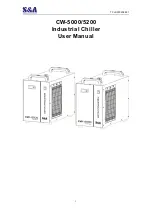
22
DR
®
VERSA TRAILER
Read and understand the warnings listed in “Chapter 1 General Safety Rules” before operating the DR VERSA TRAILER.
Chapter 3: Operating The DR VERSA TRAILER
This chapter covers the basic operation procedures for your new DR VERSA TRAILER. It may be helpful to better familiarize
yourself with the features of your Trailer by reviewing
Figure 1
in Chapter 2 before beginning the steps outlined in this chapter.
Before You Begin
x
Visually check the Winch Cable for any frays or other damage each time you use the Trailer.
x
Inspect the Winch for smooth operation, no binding, pinching or crimping of the Cable.
x
Assure that the Tires are properly inflated.
x
Assure that the Wheel Lug nuts are properly torqued.
x
Assure that the Trailer is securely fastened and properly adjusted to your Tow Vehicle using a 2" Ball and properly latching and
locking the Tow Hitch with the Safety Snap Pin.
x
Assure that all hardware is tight.
x
Inspect the Crane and Boom for any damage or bending.
Loading the Trailer
x
Never load, or unload the Trailer if it is not securely attached to a suitable Tow Vehicle.
x
Never load, or unload the Trailer if it is on, or near a slope as the Trailer may tip, or drag the Tow Vehicle down the slope.
x
Always securely set the Parking Brake and ensure the Tow Vehicle is in Park before dismounting to load, or unload the Trailer.
x
When loading the Trailer it is best to evenly distribute the weight front to rear to provide the proper Tongue Weight. If too much
weight is concentrated to the Rear of the Trailer you will cause a negative Tongue Weight, which could lift the rear of the Tow
Vehicle, which could cause you to lose control during Towing. Adversely, too much weight at the front of the Trailer can cause
too great of a Tongue weight on the Trailer and Lift the front of the Tow Vehicle off the ground, diminishing your ability to
effectively turn and stop.
x
Load the Weight evenly side to side to avoid overloading the Tires.
x
Always keep the Center of Gravity low to improve the stability of the Trailer.
x
Always secure any load placed in, or on the Trailer to limit shifting of the cargo as this can cause loss of control of the Trailer
and Tow Vehicle. Always use properly sized Straps, Ropes, etc.
x
Always follow the Towing instructions and ratings found in your Tow Vehicle’s Manual. Familiarize yourself with the Gross
Vehicle Weight Rating (GVWR) of your Tow Vehicle, which is the total weight of the load you put in, or on the Trailer, plus the
empty weight of the Trailer itself and never exceed this rating.
x
Never use the Trailer to transport People, Containers of Hazardous, Flammable, or Explosive Substances.
x
If you are using the Dump Bed with the Tailgates installed, always make sure the Latches are properly adjusted and locked.
Before loading the Trailer, extend the Outriggers no more than 15" outwards
from the end of the Operator Guard (
Figure 49
) and lower the Adjustable
Stabilizer Legs to the ground and tighten the Locking Handles. Once you have
finished loading the Trailer, raise the Adjustable Stabilizer Legs and retract the
Outriggers for travel.
NOTE:
If you are loading material into the Bed that you wish to dump, make sure
the Winch Hook is properly secured to the U-Bolt inside the Bed (
Figure 48
, on page
21).
15"
15"
Figure 49
















































